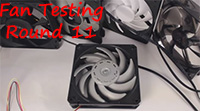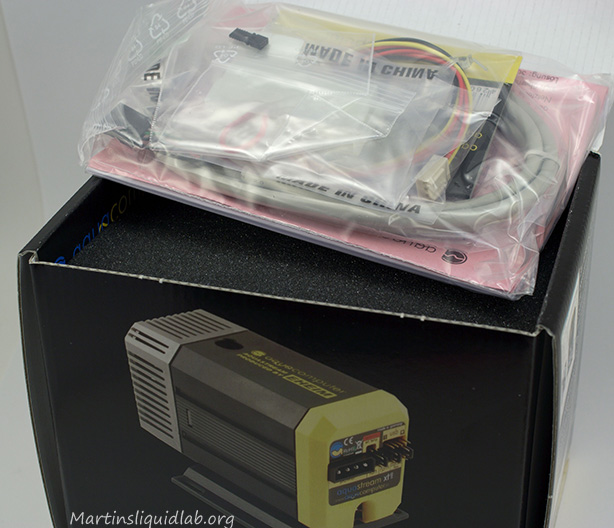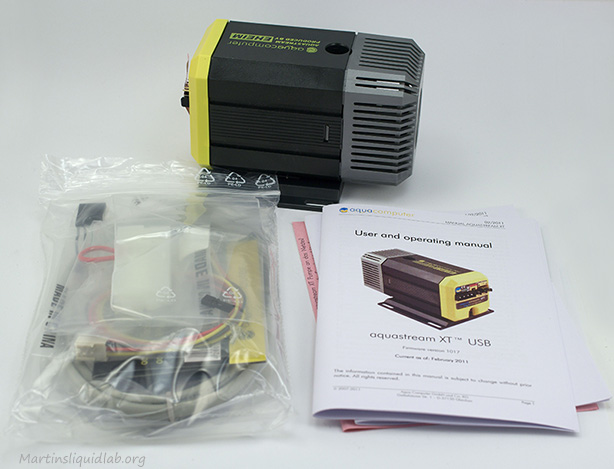Welcome to my review of the Aqua Computer’s Flow Meter. While I have typically relied on my King Instruments analog flow meters for most of my test purposes, trying to fit a 14″ tall flow meter into your case isn’t very practical. For computers we need something smaller in size that can send an electronic signal to be processed digitally. Aqua Computers has taken a popular and high quality Digmesa sensor and fabricated a new water cooling specific housing and flow chamber for it. We all like our G1/4 fittings and like a clean look which is the transformation that was done.
I would like to thank Shoggy from Aqua Computer for this review sample that was included for Aquaero review, thanks!
Benefits
While flow meters are not a necessary part of a water cooling loop, and they do add restriction, they also provide some information that can be used in a few different ways:
Clean Health Indicator – The tubes and blocks in your system are like veins and arteries in your body and can plug due to a variety of reasons. Plasticizers, flux, corrosion, and sedimentation of chemicals or some dyes can all be contributing chloresteral if you will. If you plan to keep the same loop operational for longer than 3-6 months, a precision flow meter can be a great piece of before and after information on yoru system and give you that indication that all is well without tearing everything down. Consider it a blood pressure cuff for your water cooling system.
Emergency Shut Down – In the event that a pump fails to start, quit, or begin failing..a flow meter is one way to monitor that and shut down a system due to flow rates being too low. I have seen at least one DDC pump loose part of it’s circuitry yet it still operated.
Complex Pump Setups & Parallel Loops – I have seen people connect up bay reservoirs incorrectly with two pumps in series such that only one was actually doing work. Both pumps were moving and water was moving in the reservoir, but they had no idea that allowing the reservoirs to be shared essentially eliminated all work by the first pump(no pressure differential). People are also beginning to experiment with parallel loop systems which can be an advantage but much more tricky to design properly when most parts out there don’t include basic restriction pressure drop info. While not likely, it is possible to build a parallel system that could be a pretty bad idea if the restriction levels are too unbalance. In parallel it is also possible to completely block one path of flow and not know it. Flow meters would again provide confirmation that things are operating as intended and continue that way.
Testing/Tinkering – This is of coarse why I like them. While flow rate effects are generally small, I consider it taboo to test or review something thermally without also comparing restriction in some form or another. Even if it’s not for comparison and just for information, a meter completes the package of information that is easily collected for the end user to have and think about.
I have used flow meters in the past for most of my testing work and have also used them for a couple of long term loops that I ran for over two years without cleaning, so I also see the health indicator being a value for me as I typically do like to push maintenance intervals to their maximum and generally only tear things down when upgrading.
Specification:
- Digmesa Impeller & Sensor
- Flow rate range: 0.67-10 l/min (LPM) / 0.18 – 2.64 GPM
- Tolerance ± 2.0%
- Poll value: 169 impulses per liter (Small ID Fittings)
- Supply voltage: DC 5V 5-13 mA
- Input-output threads: G 1/4 BSP nozzles
- Materials used: plastic, stainless steel
- Internals Accessible For Cleaning
- Large 3 pin connector (larger than normal fan connector)
Plug and Play Compatibility:
- aquaero 5 XT / PRO / LT
- aquaero 4.00 USB Fan-Controller
- aquaero LT 4.00 USB Fan-Controller
- aquaero 3.07 USB Fan-Controller
- aquaero LT 3.07 USB Fan-Controller
- poweradjust USB
- poweradjust USB Version LT
- aquastream XT USB Ultra-Version
- aquaduct 240 Pro mark III
- aquaduct 360 eco+







 The bottom five features are what really makes this pump interesting for me, since it does much more than pump. These features basically makes it an advance fan controller. You can hook up a flow meter, fans, external temperature sensor, and monitor/control it all including the internal water temp sensor using software. That’s considerably more “Smart” that pretty much any other pump I’ve used.
The bottom five features are what really makes this pump interesting for me, since it does much more than pump. These features basically makes it an advance fan controller. You can hook up a flow meter, fans, external temperature sensor, and monitor/control it all including the internal water temp sensor using software. That’s considerably more “Smart” that pretty much any other pump I’ve used.
 I’m impressed by the foam protection here, that’s probably the best protection I’ve seen on any pump reviewed before.
I’m impressed by the foam protection here, that’s probably the best protection I’ve seen on any pump reviewed before.
 The USB cable on the upper left, the RPM monitor cable upper right, PSU jumper lower right, and aeration jumper lower left.
The USB cable on the upper left, the RPM monitor cable upper right, PSU jumper lower right, and aeration jumper lower left.
You must be logged in to post a comment.